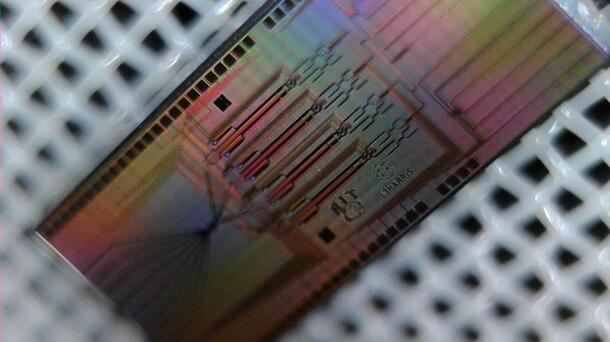They say great things come in small packages. When it comes to quantum information science, that figure of speech is taken to an almost unfathomable extreme.
The emerging field holds the potential to supercharge applications to levels few believed were possible just a few years ago. And L3Harris is harnessing quantum technologies in different ways that all come back to providing aerospace and defense customers the capabilities they require when they most need them.
Underpinning quantum science is the ubiquitous Planck’s constant – a universal constant with the value of 4.14 preceded by 14 zeros – which is why April 14 (i.e. 4/14) is marked as World Quantum Day and a day when L3Harris is highlighting the work of its Quantum Solutions team.
“Tiny values can lead to very large impacts,” L3Harris Quantum Networking Lead Scientist Timothy C. Burt said.
L3Harris is actively developing systems and techniques that harness the unique behavior of quantum nature to improve sensitivity and security for processing, sensing and networking on aircraft, spacecraft and many other uses.
“The revolution in quantum technologies and artificial intelligence will be the dominant disruptors over the next five years.” said Pat O’Reilly, L3Harris Vice President of Corporate Strategy. “There is an urgent need to gain an equal understanding of the tremendous impact quantum technologies will have on the aerospace and defense industry by the end of this decade. Quantum sensors, networks, encryptors, memories and processors will increase our capacity to transmit data, sense and analyze images, and process calculations more securely and at several orders of magnitude greater than any capability today.”
Certain quantum behaviors are unlike our everyday experience. For example, quantum systems can exist as a simultaneous combination of completely different outcomes. In quantum information and technology these combinations are called superpositions, and for two possible outcomes the colloquial name is a “qubit”, meaning quantum bit.
The 2022 Nobel Prize in Physics resulted from work on a special behavior called entanglement, “quantum mechanic’s most important resource [which holds] the potential for new ways of storing, transferring, and processing information.”
L3Harris sees an almost unlimited application of this technology.
“Our goal is to enhance our mission systems solutions with quantum technologies to provide unprecedented capabilities for our customers,” said James Drakes, L3Harris’ Lead for Quantum Information Science and Technology.
Communications networks can be more secure. Alternate methods for position, navigation, and timing can be borne on quantum information. Measuring incredibly small amounts of materials, fields, and positions is made possible by the tiny values that yield effects in quantum systems.
For example, L3Harris is combining expertise in photonics with research into quantum integrated circuits to generate and control photonics for information processing. This results in reduced size, weight and power, making the circuits appropriate for applications that would be previously impossible.
These efforts are accelerated by research collaborations with professors and students at the Rochester Institute of Technology (RIT). Their experiences in both classical and quantum information on photonic integrated circuits have led to small chips for signal processing and generation of special light that will lead to useful applications.
In addition to RIT, L3Harris places great emphasis on working with academic institutions, international standards committees, consortia, U.S. service laboratories, national laboratories, and small businesses to further and accelerate research and development of useful quantum applications.
That includes a project with the Defense Advanced Research Projects Agency to help determine potential quantum computing benefits across defense, chemistry, finance, machine learning and other areas. That is just one example of current projects with research agencies that are pushing the boundaries of what is possible when applying these technologies.
Max Planck, one of the pillars of quantum mechanics, likely could not have imagined where his theories would be going within the context of applications. But on World Quantum Day he and all contributors to quantum information science and technology are celebrated with an eye toward more giant contributions from a tiny source.
###
